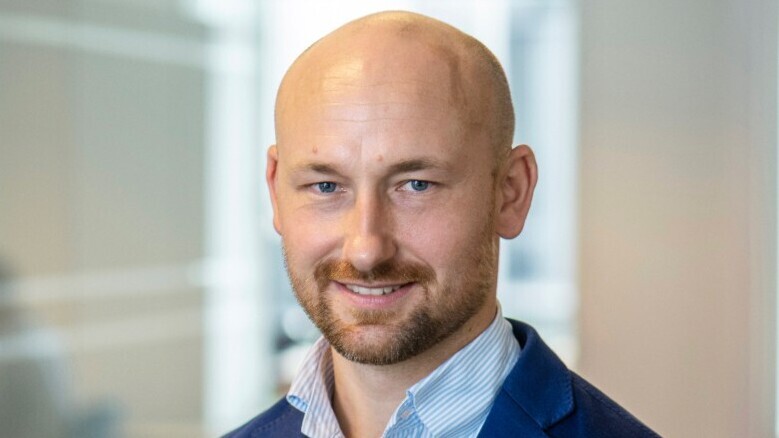
Peter Rasmussen: asset manager action on net zero has been ‘disappointing’
In an interview with Net Zero Investor, the head of sustainability at $18bn Lægernes Pension argues that asset managers should do the “heavy lifting” on climate stewardship
As the threat of climate change becomes more evident, an increased number of asset owners are putting a greater emphasis on decarbonising their portfolios. This is particularly true for Lægernes Pension, who decided in 2016 that its investments would support Paris Alignment.
In addition, the Danish medical doctors’ pension fund, which has $18bn in assets under management, is a member of the IIGCC and joined the UN’s Net-Zero Asset Owner Alliance in 2021, which requires it to commit to CO2-neutral investments by 2050.
Peter Rasmussen, Lægernes Pension’s head of sustainability, states that an important driver in helping the fund meet its “climate ambitions” is how its managers are investing its money.
Rasmussen explains that from his perspective, the fund can do several things to help deliver its climate commitments, such as using climate benchmarks in its equity portfolio and corporate bond portfolio as well as enforcing restrictions on exclusions to reach a lower emissions level. But, “down the road, we need our managers to do the heavy lifting and incorporate our net zero strategies into their active management of our funds,” he states.
Talking to Net Zero Investor, he said: “At the moment we are evaluating to what extent our managers are investing through our lens when it comes to net zero.
“And it's fair to say at this point, we're not very impressed by what most of them have come up with. And to be very clear; in the long run asset managers cannot manage our money if they don’t develop investment strategies that incorporate the necessary emissions reductions to align our portfolio with the Paris Agreement.
“This is across all sizes and types of asset managers and what we are seeing, which is somewhat disappointing, is a sort of a passive approach. It’s been eight years since the signing of the Paris Agreement and we still see skilled and experienced managers lacking a mature approach on how to address climate in their investment strategy”.
Down the road, we need our managers to do the heavy lifting and incorporate our net zero strategies into their active management of our funds.

Not actively managing within climate parameters
Rasmussen adds that increasingly asset managers are not addressing how they can actively manage pension funds’ assets within climate parameters.
It’s the responsibility of asset managers to come up with strategies that both incorporate climate considerations and make superior returns, it is not the responsibility of asset owners, he argues.
In addition, within the European context, many asset owners, like Lægernes, must abide by certain climate regulations and frameworks such as the Sustainable Finance Disclosures Regulation and the EU Taxonomy.
“It's also somewhat disappointing, that the comprehensive European regulations on sustainable finance have yet to generate an innovative product offering in terms of sustainable investment strategies. It seems that regulatory uncertainty might have stifled product innovation to some degree,” Rasmussen continues.
New divestment policy
In his interview with Net Zero Investor, Rasmussen highlights that Lægernes Pension has this year updated its net zero strategy and revised its divestment policy. Before this policy was initiated, the fund had divested from companies involved in coal mining and other fossil fuel companies in the energy and utility sectors but had not constructed a general framework.
Rasmussen states that Lægernes Pension’s updated divestment policy is focused on companies involved in oil and gas exploration.
When formulating the policy, the fund took a sector-wide approach and tried to measure the oil and gas performance on various climate-related metrics, “not surprisingly the oil and gas companies – with a few exceptions - came up rock bottom on all indicators”, he explains.
The pension fund also ran an analysis of the potential consequences of excluding the oil and gas sectors from its portfolio. “We looked to academia to find research on corresponding analysis. Both our own analysis and research pointed to a zero marginal effect of divestment on risk-adjusted returns for our portfolio. And neither our analysis or the research findings did account for the potentially serious transitions risks faced by the oil and gas industry,” Rasmussen adds.
Lægernes Pension now excludes companies involved in the extraction of oil or gas based on the economic sectors companies are assigned to. The policy continues to incorporate exclusion for coal mining (1% of revenues), electricity generation from coal (50% of revenues ) and companies involved in oil extraction from tar sands or extraction activities in the Arctic region (5% of revenues).
The new divestment policy has led to Lægernes Pension excluding 110 oil and gas companies from its investments. However, companies can be investable again if they commit to credible transition plans, which we measure using MSCI’s temperature indicator, Rasmussen explains.
To be honest, we simply expect companies to do their job on climate. In our view aligning your business with the Paris Agreement is not a topic for engagement. It is a must at this point.

Stewardship stance
Finishing off the interview, Rasmussen drew some light on the pension fund’s stance on stewardship. He explains to Net Zero Investor that its engagement approach is “very much focused on proxy voting” as the fund believes that it is – at this point – the most efficient tool for investors of Lægernes’ size.
“As a fairly small investor with limited administrative resources, we can’t really be on top with all the largest companies in the high emitting sectors which is needed in order to achieve a productive engagement.
“Engagement is a time-consuming affair where positive outcomes are in no way guaranteed. And we are very conscious on always using the most efficient tools for advancing sustainability in our portfolio. At this point we are a bit sceptical on directing a lot of our resources towards engaging with individual companies that constitute a small part of our overall portfolio.
“So in terms of engagement we are still looking for ways to do it efficiently and do it on a strategic level. And to be honest, we simply expect companies to do their job on climate. In our view aligning your business with the Paris Agreement is not a topic for engagement. It is a must at this point,” Rasmussen finishes.




